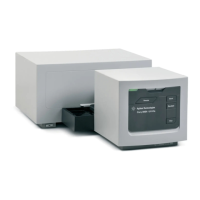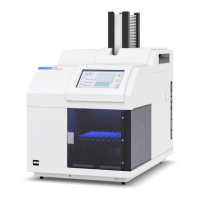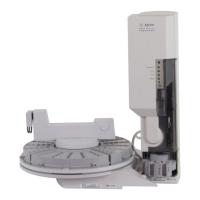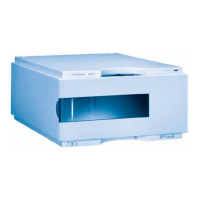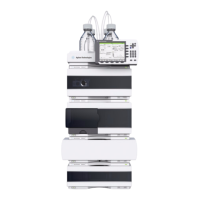Understanding Your Agilent ChemStation 235
Evaluating System Suitability
11
Noise Determination
Noise Determination
Noise can be determined from the data point values from a selected time range
of a signal. Noise is treated in three different ways:
• as six times the standard deviation (sd) of the linear regression of the drift,
• as peak-to-peak (drift corrected), and
• as determined by the ASTM method (ASTM E 685-93).
The noise can be calculated for up to seven ranges of the signal; the ranges are
specified as part of the system suitability settings in the reporting parameters.
Noise Calculation Using Six Times the Standard Deviation
Figure 42 Noise as Six Times the Standard Deviation
The linear regression is calculated using all the data points within the given
time range (see “Regression Analysis” on page 253). The noise is given by the
formula:
N = 6 × Std
where
N is the noise based on the six time standard deviation method, and
Std is the standard deviation of the linear regression of all data points in the
time range.
cd^hZ2
+mHY
a^cZVg
hadeZ2Yg^[i
HY2HiVcYVgYYZk^Vi^dc
i^bZ
GZ\gZhh^dc

